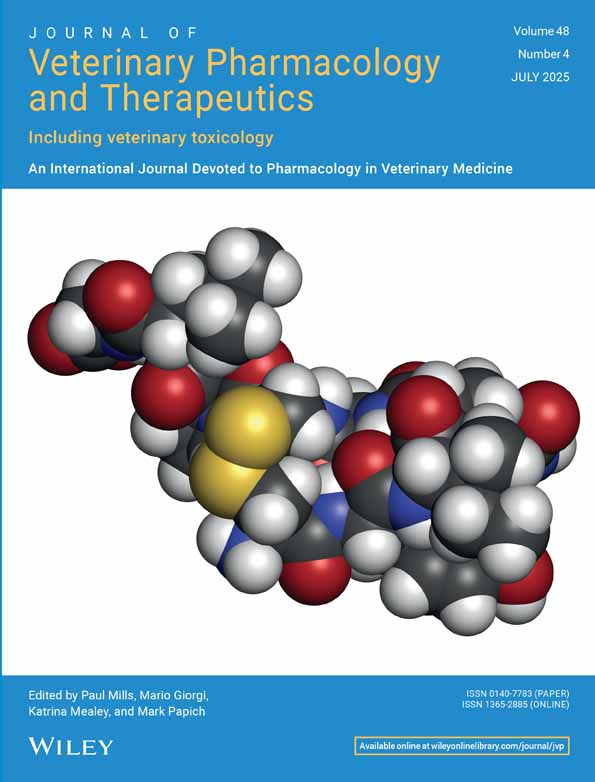Population Pharmacokinetics of Florfenicol in Crayfish (Procambarus clarkii) Based on the Sparse Sampling Method and a Nonlinear Mixed-Effect Model
Funding: This work was supported by the Central Public-Interest Scientific Institution Basal Research Fund, Chinese Academy of Fishery Sciences (YFI20240404), National Natural Science Foundation of China (32173022), R&D Program of Hubei in Characteristic Freshwater Products Industry Chain, Central Public-Interest Scientific Institution Basal Research Fund, Chinese Academy of Fishery Sciences (2023TD47), and National Key Research and Development Program of China (2019YFD0901701).
ABSTRACT
The present study was conducted to establish population pharmacokinetics (PPK) of florfenicol (FLO) in crayfish (Procambarus clarkii) after a single oral administration at a dose of 15 mg/kg at 25°C based on a nonlinear mixed effect model. The sparse sampling method was used to collect the blood samples. Thirty-two crayfish were divided into four groups, and one group included four male crayfish and four female crayfish. One animal undertook three sampling time points. All samples were quantified using high-performance liquid chromatography with an ultraviolet detector. The initial pharmacokinetic (PK) parameters were estimated by reference search and the calculation of a naïve pooled approach. The additive error model was selected using the tool of maximum likelihood model comparison. The covariate model included the two variations of body weight and sex. Through the addition and subtraction of parameters, weight and gender had no significant effect on the alterations of PK parameters. Afterward, the random effects were introduced in the model, which notably reduced the coefficient of variation. Finally, the calculated values of the absorption rate constant, apparent distribution volume, and total systemic clearance were estimated to be 1.93/h, 11.16 L/kg, and 2.35 L/h/kg, respectively. The secondary parameters of the elimination rate constant, elimination half-life, and area under the concentration-time curve were calculated to be 0.20/h, 3.47 h, and 6.38 h.mg/L, respectively. This study supported a concise method for conducting PK studies in crustacean animals that facilitated the development of PK methodology in aquaculture.
Conflicts of Interest
The authors declare no conflicts of interest.
Open Research
Data Availability Statement
The data that support the findings of this study are available from the corresponding author upon reasonable request.




